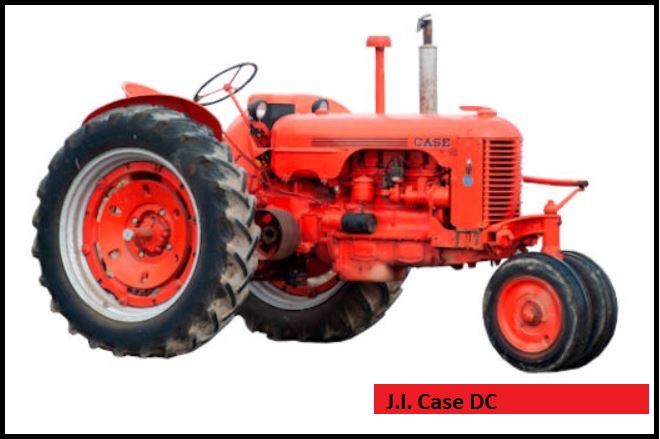J.I. Case C Specs, Weight, Price, Horsepower,Fuel tank capacity, Review & Serial Number
Here in this post, I have taken all the details about J.I. Case C from the (official site) including J.I. Case C specs, Weight, Price & DimHere in this post, I have taken all the details about J.I. Case C from the (official site) including J.I. Case C specs, Weight, Price & Dimension. we believe to provide accurate details to our readers and we prefer only official sources for information about J.I. Case C.
J.I. Case C Overview
The J.I. Case C is a 2WD Standard-Tread Tractor From the C Series. This tractor was manufactured by J.I. Case in Racine, Wisconsin, USA from 1929 to 1940. The J.I. Case C is equipped with a 4.3 L (259.5 cu·in) four-cylinder gasoline engine and a gear type transmission with 3 forward and 1 reverse gears.
The J.I. Case gasoline engine was used in the J.I. Case C standard-tread tractor, It had a four-cylinder, natural-aspiration, 4.3 L, 4,252 cm2 (259.5 cu in), engine with a bore and stroke of 98.0 mm (3.86 in) and 140.0 mm (5.51 in) respectively. 4.88:1 is the compression ratio rating. The J.I. Case C has manual steering, an open operator station, and a gasoline tank capacity of 68.0 litres (18 US gal; 15 Imp gal).
J.I. Case C Price New

J.I. Case C Price: $600 USD (1930 )
J.I. Case C Weight
J.I. Case C Weight (operating): 1,950 kg (4,299 lbs)
J.I. Case C Horsepower:
J.I. Case C Horsepower: N/A
J.I. Case C Fuel tank capacity
J.I. Case c fuel tank capacity: 68.0 liters
J.I. Case C Serial Number
| Location: | Instrument panel |
| 1929 | 300201 |
| 1930 | 300301 |
| 1931 | 300401 |
| 1932 | 300501 |
| 1933 | 300601 |
| 1934 | 300701 |
| 1935 | 300801 |
| 1936 | 300901 |
| 1937 | 400001 |
| 1938 | 4200001 |
| 1939 | 4300001 |
| 1940 | 4400001 |
J.I19. Case C Specifications
Engine |
|
| Engine model | J.I. Case |
| Engine type | Four-stroke, liquid-cooled, inline |
| Fuel type | Gasoline |
| Fuel type | Gasoline |
| Horsepower | – |
| Cylinders | 4 |
| Displacement | 4.3 L, 4,252 cm2, (259.5 cu·in) |
| Compression ratio | 4.88:1 |
| Coolant capacity: | 18.9 L (20 US. qt, 16.6 Imp. qt.) |
General Specifications |
|
| Model | J.I. Case C |
| Width | 1,520 mm (59.8 in) |
| Wheelbase | – |
| Fuel tank capacity | 68.0 liters (18 US gal.; 15 Imp. gal) |
| Cabin type | Open operator station |
| Length | 2,890 mm (113.8 in) |
| Height (hood) | 1,210 mm (47.6 in) |
| Weight | 1,950 kg (4,299 lbs) |
| Battery | – |
Transmission and chassis |
|
| Chassis | 4×2 2WD |
| Brakes | – |
| Transmission type | Gear type with dry disc clutch |
| Speed | Forward: 7.2 kmh (4.5 mph) Reverse: 4.2 kmh (2.6 mph) |
| Steering type | Manual |
| Transmission model | – |
| Gears | 3 forward and 1 reverse |
Tires |
|
| Front tires | Ag: 28-5 (steel) |
| Rear tires | Ag: 42-12 (steel) |
| Wheelbase | 66 inches/167 cm |
POWER TAKE-OFF (PTO) |
|
| Rear PTO | transmission |
| Rear RPM | 535 (1.375) |
J.I. Case C Review
The J.I. Case C tractor, in production from 1929 to 1939, gained widespread popularity as a versatile, robust workhorse. Renowned for its durability and power, it came in various configurations, including standard, row-crop, and orchard models, and offered a range of options like a power take-off (PTO), a belt pulley, and a rear seat.
Under the hood, the C was propelled by a four-cylinder engine, churning out 25 horsepower. It featured a three-speed transmission and a handy differential lock.
The tractor’s user-friendly design included a hand clutch, a foot throttle, and a steering wheel to facilitate ease of operation.
For more details check out the youtube video
conclusion
After research, I have provided information about J.I. Case C Specs, Weight, Price & Review in this post. So I hope you liked this article. If you liked then share this article with your friends, family, and relatives. And if you still feel that I have left out something in this post then you can tell me in the comment box below. For more information visit our website: Commercialvehicleinfo.com
FAQs – J.I. Case C

Q.1 What does JI Case Stand For?
Jackson Irving Case (1865-1903) — son of Jerome Case. Jerome I. Case High School — A Wisconsin high school, also known as J.I. Case or Ragini Case.
Q.2 What did JI Case invent?
- J.I. Case and Company Produce the First Steam Engine Tractor. Although it is Wheel-Mounted The Horses Still Pull It. It Can Only Be used to Power Other Machines

